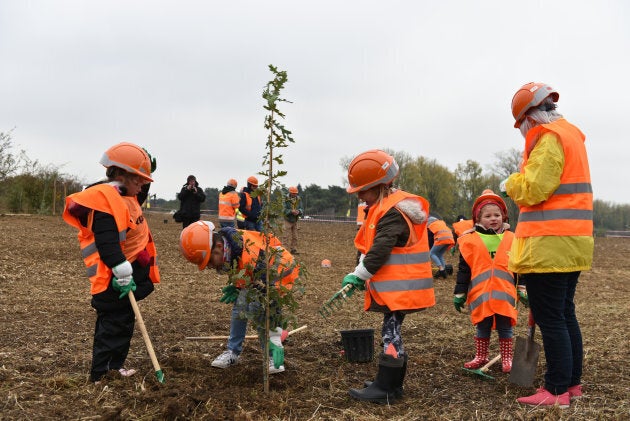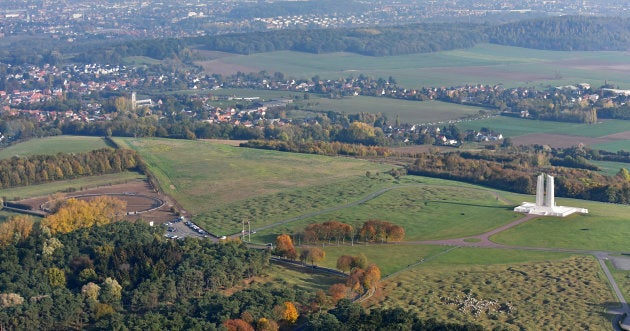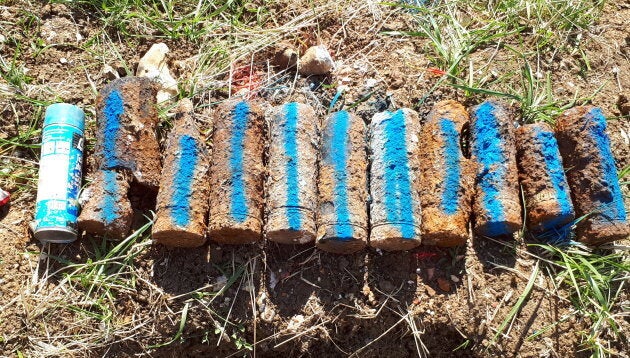More than 100 years ago, a Canadian soldier took pause from his fighting duties at Vimy Ridge and pocketed a few acorns scattered by a downed oak tree.
The late Lt. Leslie Miller brought those acorns home to Canada, and began growing them on his farm in Scarborough, Ont.
Over the years, those trees grew into beautiful, mature plants, producing their own acorns. Oak trees grown from the new generation of seeds have been placed in parks and at cenotaphs across Canada.
Now, 100 of the descendants of the original Vimy Ridge oaks have been planted back where the battlefield once stood, as part of a new park that will serve as a modern living memorial in commemoration of the centenary of the armistice of the First World War.

The Vimy Foundation Centennial Park, which opened on Nov. 9, sits adjacent to the Canadian National Vimy Memorial and is a place for remembrance and education, said Jeremy Diamond, executive director of The Vimy Foundation, the organization responsible for the park's build.
Visitors to the park can walk along concentric paths designed to represent the four divisions of Canadian soldiers who fought for the first time at Vimy. Or they can sit on one of the donated benches, look out over what is now beautiful countryside, and reflect on the history of the land and the sacrifices made.
"We were thinking long-term when we started to plan the park," Diamond told HuffPost Canada. "It's about creating something that in 100 years from now people will still be remembering the anniversary (of the armistice)."

Because the park sits on a four acre parcel of land where soldiers once fought, an extensive de-mining process was needed to rid the land of live shells and other artifacts of war.
The land was de-mined three times, in total, and each turn of the soil dug up live artillery, human remains, barbed wire, shovels, and cups and glasses.
"(The artifacts) present an opportunity for young people to get an understanding of where they are, as the battlefield doesn't look anything like the battlefield of 100 years ago," said Diamond.

James Stewart, a Grade 10 Canadian history teacher at Bishop Strachan School in Toronto, took a group of 35 students to France in 2017, including a visit to Vimy Ridge.
"At Vimy Ridge there is the monument, but aside from that — and the trenches and tunnels — there isn't much else there. The site has always kind of needed something more to interpret the park, so it's nice to have another destination," he told HuffPost Canada.
"This project, with the acorns and the trees, is really a grassroots celebration of what the site is. It's nice to see the trees coming back," he added, noting that all of the battlefield's oak trees would have been wiped out by intense shelling.
Stewart said that no soldier fighting at Vimy Ridge during WWI would have given a thought to the idea that students would be visiting the area years more than a century later.

"It's quite amazing that 100 years later people are taking the time and effort to acknowledge the history."
Stewart's students are always eager to study Canada's war history, and the First World War curriculum is often one of his more popular modules.
"A lot of these people going into these wars were underage, too, so the students connect with that. It's harrowing to think of sending these kids off to war, but off they went."
More from HuffPost Canada:
In addition to the oak trees, paths and benches, visitors to the park are greeted by a bronze replica statue of a bugler — the original statue sits at CFB Borden, near Barrie, Ont., the base where many of Canada's WWI soldiers trained before heading overseas to fight.
"There's this symbolism of them calling to each other across the Atlantic Ocean — from where they trained to where they died," said Diamond, adding that he hopes the park will still be used in another 100 years.

"There are no First World War veterans alive anymore — it's up to us to preserve that memory. Now it's on us to make sure that memory lives on."
Anyone interested in donating to the park, or purchasing a tree or bench, can visit The Vimy Foundation's website.
Lest we forget: